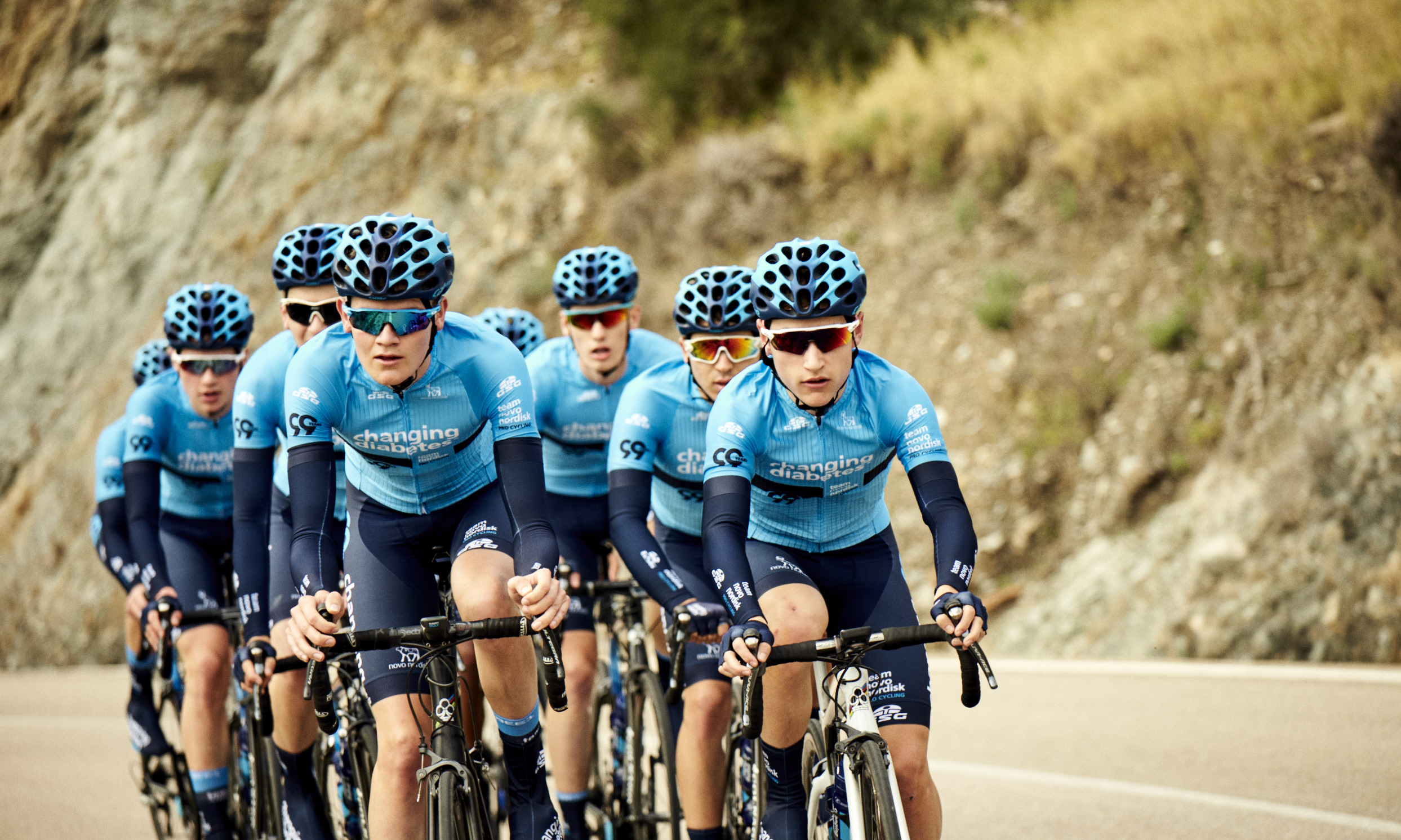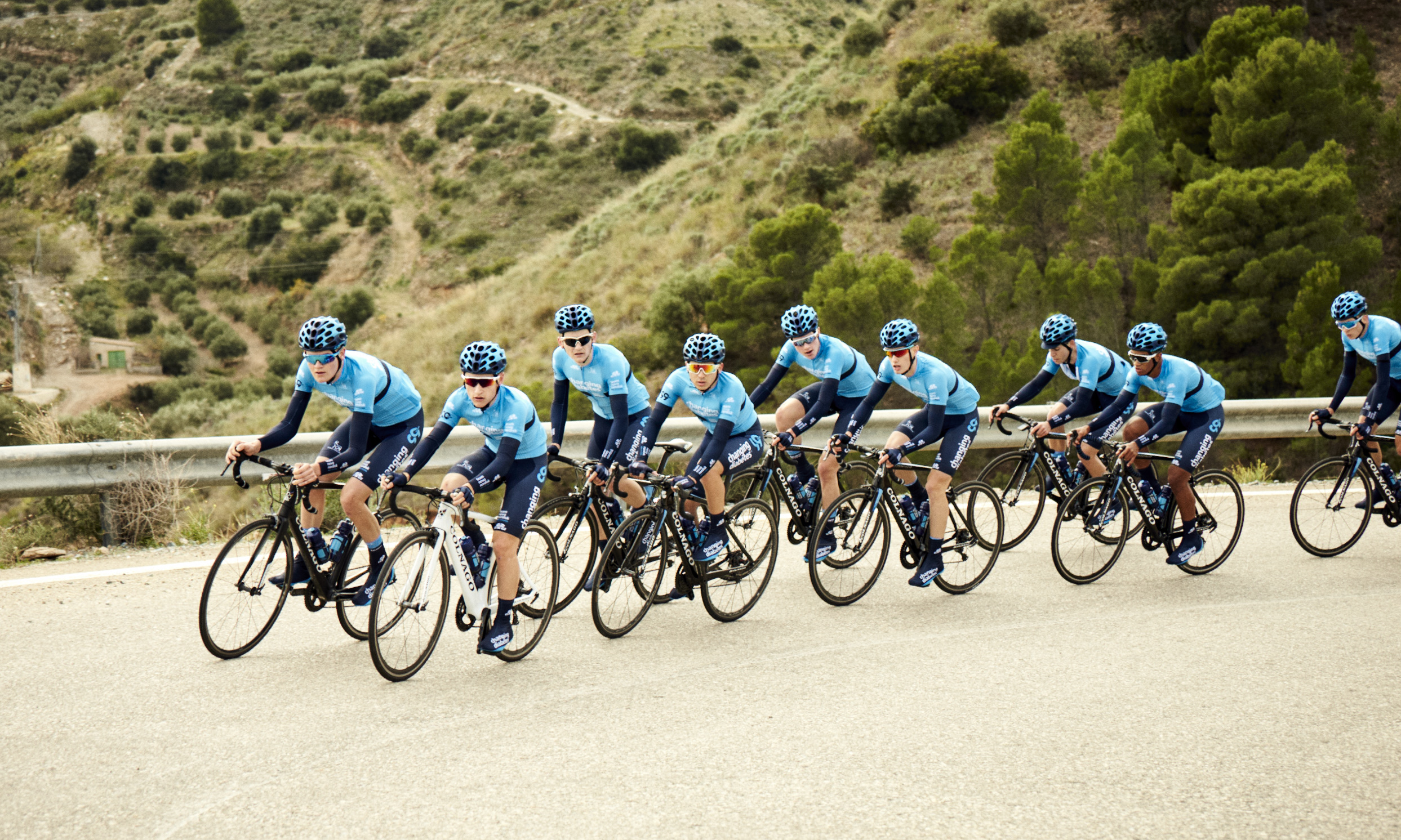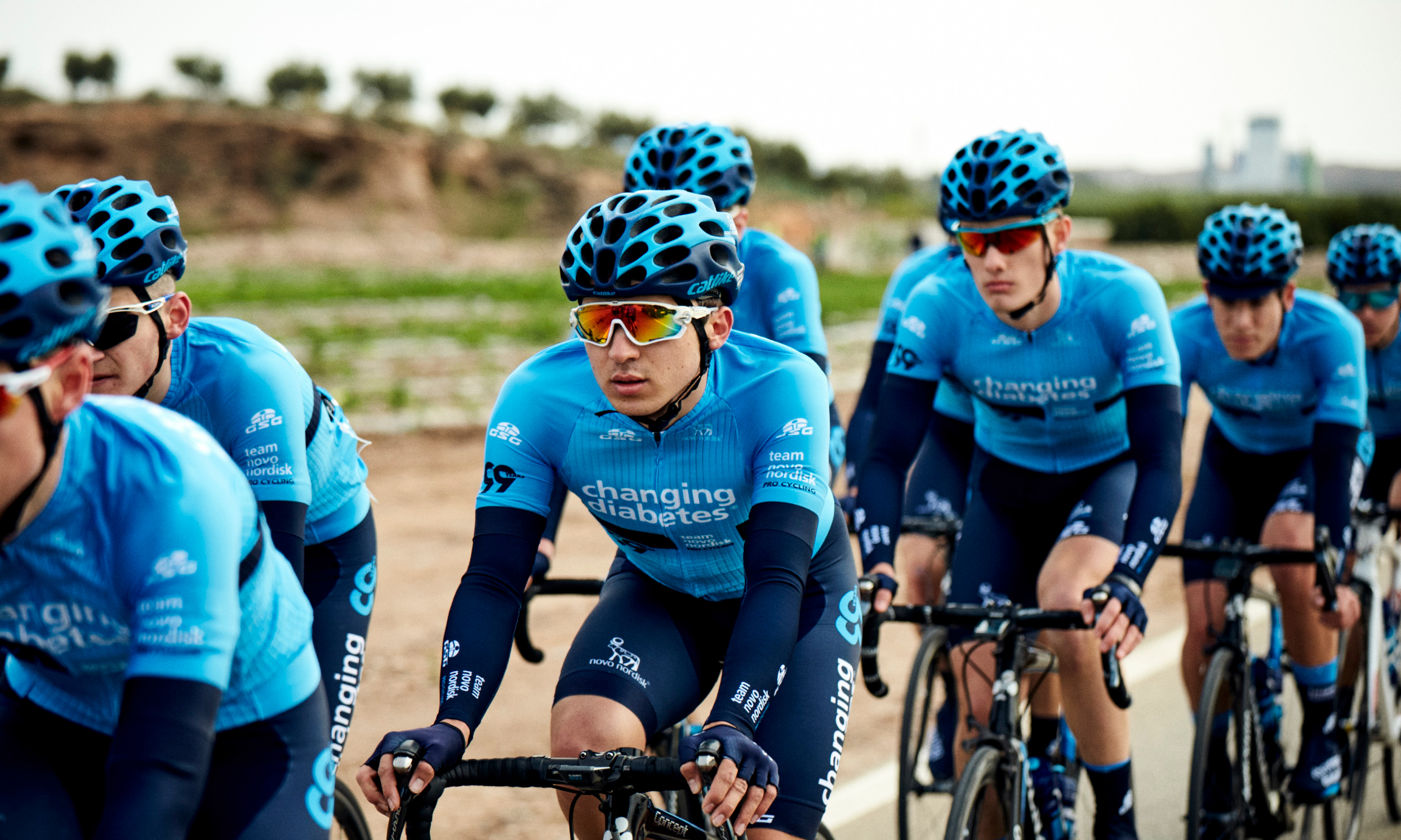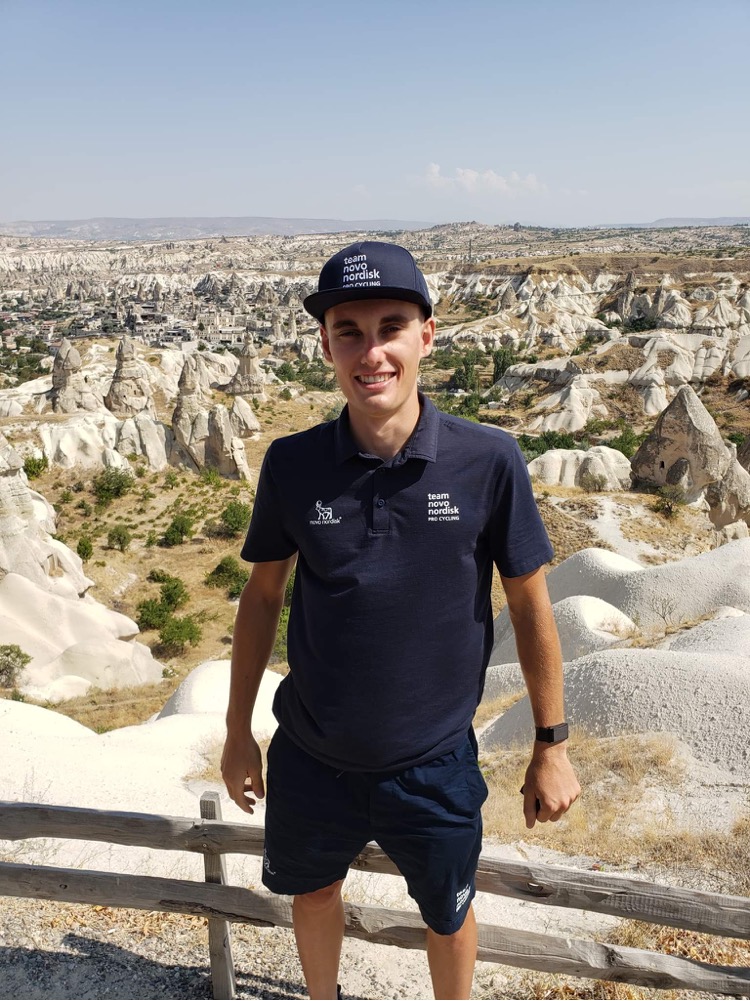Twenty-five-year-old Václav Šňupárek is a Master’s student at the Faculty of Physical Education and Sport at Charles University who competed in many sports before becoming a professional cyclist. He is a member of Team Novo Nordisk, a team unlike any other whose athletes all have Type-1 diabetes (requiring daily insulin shots). The existence of the team is proof that diabetes does not have to be a hurdle – and that with proper glucose management – this obstacle can be overcome. The interview was conducted over the phone at a time when the rider was training in the Canary Islands.
You have been training with fellow Czech cyclist Roman Kreuziger. Is he someone you look up to?
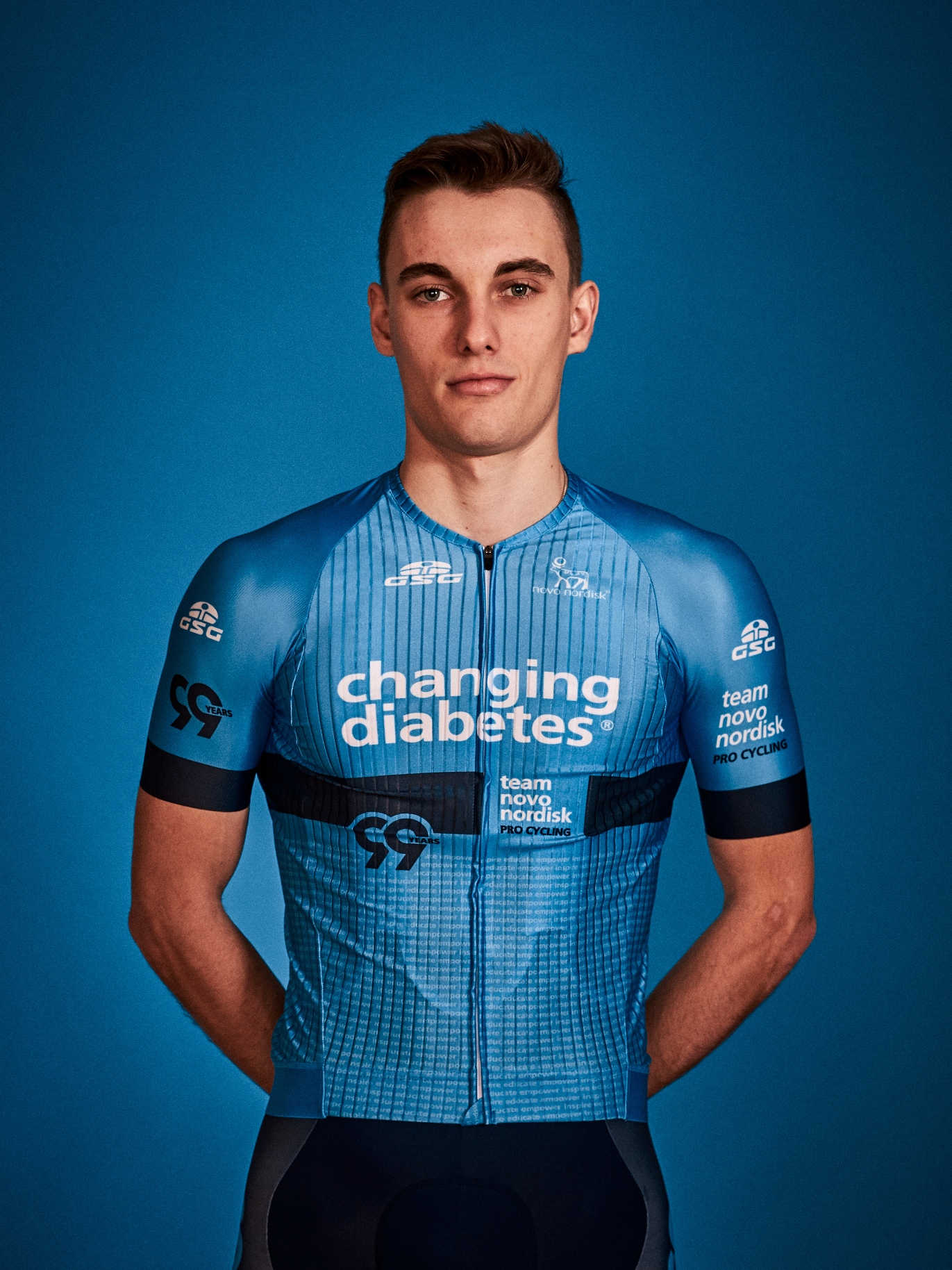 Of course. Without question, he is one of our country’s very best: the opportunity to talk and train with him and to get information from the top echelons of cycling is just incredible. I know him from the Ski and Bike Centre Radotín and the “One-and-a-half metres” project, bridging the divide between drivers and cyclists.
Of course. Without question, he is one of our country’s very best: the opportunity to talk and train with him and to get information from the top echelons of cycling is just incredible. I know him from the Ski and Bike Centre Radotín and the “One-and-a-half metres” project, bridging the divide between drivers and cyclists.
Could you have imagined something like this a few years back? At the time, you were competing on skis and on the mountain bike.
You are right, I couldn’t. I took a rather unusual path to becoming a professional road cyclist and not one I would have said was very “likely”. As a kid, I rode a lot from the age of five and up. But I did all kinds of the sports, some of them even on junior national teams. Among the most important for me were foot, ski and bike orienteering, athletics, tennis, hockey, and cross-country skiing, some of which I did for more than 10 years. Training conditions in the Czech Republic probably serve cycling the best. If you want to ski, you have to live in a mountainous area and even then it’s often not enough and training abroad is a requirement because of the snow conditions.
That is true of road cycling as well, isn’t it?
In the end yes. It just isn’t as effective to train for long hours in the winter when the temperature drops below zero, which is why we often rack up so many kilometres in places like Spain.
You competed in MTB races before. Why did you switch to road racing?
Even when I did cross-country, I still had a road bike for training and I raced a little on the road as well, albeit shorter criterium races. Road cycling became a priority when, in August 2017, I was diagnosed with Type-1 diabetes.
How did you learn you had diabetes?
As a student of physiotherapy, it wasn’t a complete shock: I had had poor results all season and began having terrible cramps during races several weeks before I was diagnosed. I also began having classic diabetes mellitus symptoms – polydipsia and polyuria – that means extreme thirst and an increased need to urinate, to the point it began waking me up repeatedly at night and meant I didn’t get enough sleep. I recognised the symptoms and went for blood tests at Motol University Hospital in Prague. The results confirmed my suspicions and I was hospitalised the next day. I spent four days at Motol where they outlined my first therapy plan.
Cycling is a very tough physical sport; does the condition limit what you can do?
Actually, sports and the burning of energy is very good for me in managing my diabetes, it’s good for diabetics in general. The most important thing for us is to keep our blood sugar levels within set norms. We have to watch what we eat and manage insulin intake based on variable factors: obvious ones are training sessions, but even the weather and outside temperature all have an impact.
I use a sensor that monitors my blood sugar level with an update every five minutes and sends the information to my phone. That means I always know whether my glucose level is stable, falling, or going up, and I know what is going on in my body. If I didn’t use the sensor, I’d have to measure my blood sugar using a fingerstick. If I had to do that every five minutes, it wouldn’t be very practical.
Professional races last several hours: does that mean you have to get off the bike at some point to take insulin?
The first time I had to take insulin during a race was last September, at a UCI race in Turkey. It was extremely hot and I had to lower my glucose during the race so that it stayed within acceptable norms. I ride with insulin in my pocket, so giving myself a shot takes only a couple of seconds. During a race where you’re going between 40 – 50km/h, you have to eat or dress/undress your jacket, so it’s not a problem for us to take hands off the bars for a few seconds. Some of my fellow racers don’t use an insulin pen at all, however, but a pump that injects insulin on its own. It’s even easier for them.
What do you do when your sugar levels fall?
To avoid hypoglycaemia, I always have extra food with me even during training as well as a number of fast-acting glucose gels when I really need it. When not training, I deal with low sugars by eating fresh fruit, which is more natural and healthier. I won’t deny I have a can of coca cola nearby if I was really low (laughs).
Every rider on the team is diabetic so I guess that requires greater medical surveillance as well as permission from race organisers, is that the case?
The team of course has top medical support and so we are under a watchful eye, both on the team and from my own doctor. The team takes all hygienic recommendations and principles very seriously. As for insulin, we have waivers approved by national cycling associations and UCI, allowing us to take insulin and race [Editor’s note: no type 1 diabetic has the option of not taking insulin, obviously: their lives depend on it]. We each travel with our own insulin and we use it as a replacement for a substance every other athlete is naturally producing. We only take insulin to bring ourselves to a level playing field.
The story of Team Novo Nordisk is fascinating. The team hopes to inspire and help all those who live with diabetes. The fan base is enormous.
The team has a lot of experience in managing diabetes and sport, probably unlike any other even in different sports, and I think we are innovators in this aspect. I think you can objectively say that the team helps the diabetic community, providing both inspiration but also information in the form of publications in science journals by the team’s research branch.
How, in fact, did you make the team?
I knew that the team existed, that it consisted of racers who have diabetes, and competed even in the toughest of races. When I was diagnosed, I realised, paradoxically, that it was an opportunity to become a professional cyclist and I contacted them. Within several days I have received a reply from their talent coordinator who asked me to send them a monthly training recap and race results; based on these, I was invited to a summer talent camp in the US two years in a row. Around 25 of us from all around the world met there for one week of training and two of us were invited to join the team afterwards.
Right before the first training camp, when I was in my final year of my bachelor’s at CU, I went on an Erasmus internship to Belgium, because Belgians are leaders in physiotherapy, as well as cycling, and I wanted to take advantage of both.
| TEAM NOVO NORDISK |
| The team is a part of the “Changing Diabetes” initiative, helping more than 437 million people with diabetes worldwide. Besides professional cycling, the initiative supports professional triathlete teams, runners, and serves to increase awareness and knowledge and to help all those who have diabetes. The road cycling racing team was founded in 2012, merging what had been an idea by Phil Southerland and his team of diabetic cyclists and the Danish pharmaceutical company Novo Nordisk. Of all the professional cycling teams, our fan base on the social networks is the largest – more than 8.5 million people – eight million of which are on Facebook. This year, the team introduced the new official team clothing design – blue with a yellow stripe as well as an icon marking the discovery of insulin 100 years ago. |
You were the first Czech to be accepted on the Development team, one level below the elite Pro team. How would you describe your rookie year?
The longer, domestic part of the season was a bust and I think monitoring my race results must have been punishment. When we met as a team in Turkey, however, things improved and the rest of the programme my performance was good and consistent, thus reliable, which was important for the whole team effort. The leaders were two colleagues who were set to advance to the Pro team, and the rest of us worked for them. Carrying water, chasing breakaways, providing a slipstream, starting attacks to push ahead, and other tasks during individual moments in the race based on our tactics.
What are your goals for next season?
Last year I trained more hours and rode more kilometres than ever before so I am curious to see what kind of an effect it will have. So far, the numbers look promising: ideally, I would like to take the position of leader on the team, to achieve an individual result, for example, scoring UCI points. Last season I saw that it was possible.
Because of my age, it would be ideal to make the move to the Pro team; the Development team’s focus is on younger riders. On the other hand, I’ve only had diabetes three years, meaning I wasn’t trained by the team as long as a number of others. I also realise I didn’t put in the same hours on the bike as a youth, so I have fewer hours in the saddle as a whole. I’m trying to erase the difference by training hard.
Are you friends with other riders on the team?
I get along well with Nigel De Sota from the US and Przemek Kotulski, who is from Poland. We have similar interests and opinions outside of cycling. A cycling team doesn’t always have to feel like a family and it’s not guaranteed you will all get along or understand each other. But it quickly becomes obvious in competition if there are riders who are not on the same page and it shows up in the results. Luckily, that is not the case on our team.
During the winter, you train in warmer climes, and spend a lot of time on the bike. When do you have time off?
The season lasts from February to October but there are professional races even in the offseason, if not nearly as many. So you can race all the time. It’s up the team to decide which races we compete in and where we receive an invitation to take part. In November, at the start of the offseason, I had a three-week break and I had two weeks of unstructured training just on my own. You can also do other sports and find enjoyment in it and to take a break from the bike. It’s important mentally to take a break. Then, the start of December means preparation for the coming season again.
What do you like doing when you’re not on the bike?
I enjoy other sports as alternative training so in the winter that most often means cross-country skiing but I don’t have that many opportunities, just once in a while. The last time I had a bit of time off I did small day-trips where I could mess around on the mountain bike and hiked a bit on foot in the Krkonoše (Giant) Mountains. During training camp, I usually have a couple books with me, so I also spend time reading.
I got Mission Afghanistan by Tomáš Šebek, a Czech doctor who took part in several missions with Doctors without Borders, and I finished it almost without putting it down. The overall impression was incredible and I recommend it. The second book is by Marian Jelínek. Most of all I enjoy reading English-language books, most recently Orwell’s 1984 and something by Terry Pratchett, whose books you couldn’t pry from my fingers when I was younger.
Assigned reading material no doubt is also part of what you have to read; how hard is it to balance school with your sports career?
It was a little more difficult at the start of the school year because I had many races in the US in October – but it has actually been a little easier now because of distance learning. I try and prepare the best I can at the start of the season to balance both.
You mentioned that you went to Belgium as part of your studies: how long were you there?
I did an internship at the Dominiek Savio Instituut where I worked with children with cerebral palsy. I used the experience and knowledge I gained there for my Bachelor’s thesis, which was a success. I chose to do an internship there because I had already gained experience at classic orthopaedic centres in the Czech Republic and neurology and cerebral palsy were unknown territory for me. I had good results with a number of patients over the two months and it broadened my horizons. There are other types of therapy, however, that I would like to try. I also hope to apply and make use one day of the experience gained in the world of professional sport.
| Student and professional cyclist Václav Šňupárek |
| Václav Šňupárek is a Master’s student at the Department of Physiotherapy at Charles University’s Faculty of Physical Education and Sport. He is also professional cyclist who rides for Team Novo Nordisk. Three years ago, he was diagnosed with Type-1 diabetes that spurred his decision to become a professional rider. Sports and physical activities are beneficial for diabetics and Šňupárek sees it as key to successfully managing the condition. |
